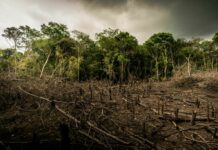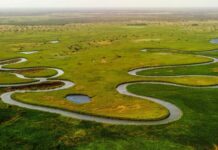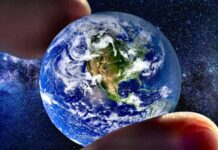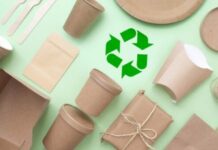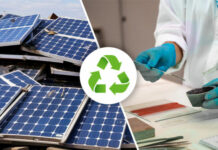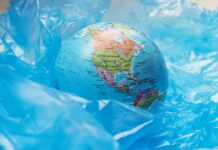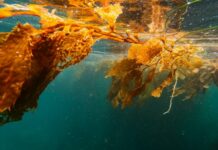
While it is true that the invention of plastic was nothing short of revolutionary for the great benefits this material has brought to humanity in all areas, it is equally true that inordinate production and consumption of plastics has led to one of the most disastrous environmental catastrophes of recent years.
The properties that make plastic a good marketable product (such as lightness, durability, strength), however, also make it inert, thus very resistant to degradation. This has led to its ubiquitous diffusion, in fact, to date, plastic can be found in practically all ecosystems and natural environments, even the most remote and unthinkable. Recent studies have detected the presence of polystyrene microplastics in the Antarctic Ocean (Isobe et al., 2017) and traces of microplastics have even been found in human tissues and excretions, including lungs, respiratory tract, liver, spleen, placenta, colon, blood and faeces (Prata, J. C., 2023).
Plastics, to date, are the third most widely used man-made material on Earth, after steel and concrete (Geyer R. et al., 2017). Among the world’s most popular plastics are low-density polyethylene (LDPE) and polyethylene terephthalate (PET) (Gewert et al., 2015; Plastics Europe, 2021), which are widely used in the production of everyday products such as trays and containers or films for food packaging, in the case of LDPE, and bottles or bags in the case of both polymers.
Plastic waste is now so widespread in the environment that it has been suggested as a stratigraphic indicator of the current new geological era, marked by the influence of human activities: the Anthropocene (Gestoso I. et al., 2017). Most plastics (90%) come from fossil sources and none of the commonly used ones are biodegradable, consequently they accumulate in landfills or in the natural environment and, after a slow disintegration caused by abiotic (sun, heat, humidity) and/or biotic (bacteria and fungi) factors, they turn into tiny fragments, invisible to the naked eye, called microplastics.
Although there is no scientific consensus on the definition of ‘microplastics’, they are usually defined as ‘plastic fragments less than 5 mm in diameter’. Based on their size, they can be further divided into four categories: microplastics (< 0.5 cm), mesoplastics (0.5-5 cm), macroplastics (5-50 cm) and megaplastics (> 50 cm) (Lebreton et al., 2018). Micro- and nano-plastics result not only from the direct release into the environment of products that contain them (primary microplastics), such as cosmetics, pre-industrial pellets and cleaning products, but also from the fragmentation and degradation of plastic waste abandoned in nature, tyre abrasion, brake wear or washing of synthetic fabrics (secondary microplastics).
Microplastics are difficult for organisms to digest and decompose, resulting in their spread throughout the global food chain. The closer an organism is to the top of the food chain, the higher its microplastic content, and this phenomenon seriously endangers human health. Microplastics act as veritable reservoirs for harmful chemicals, such as persistent organic pollutants (POPs) and heavy metals (Shin and Choi, 2023), which can cross the various trophic levels and cause bioaccumulation and biomagnification (from Costa et al., 2016).
The three main routes of exposure for humans are ingestion of food containing microplastics, inhalation of microplastics in the air and skin contact with these particles (Revel et al., 2018). The main route of entry of microplastics into the human body is undoubtedly the ingestion of contaminated food, such as agricultural products and seafood. Fragments of microplastics have already been reported in a wide range of food products, such as mussels, commercial fish and table salt, among others (Neves et al., 2015; Li et al., 2016). Due to their persistent nature, their removal from the body is difficult, which can cause chronic inflammation that increases the risk of cancer (Kirstein et al., 2016; Revel et al., 2018). Many of the toxic effects on the human body, however, remain unknown and studies are still ongoing.
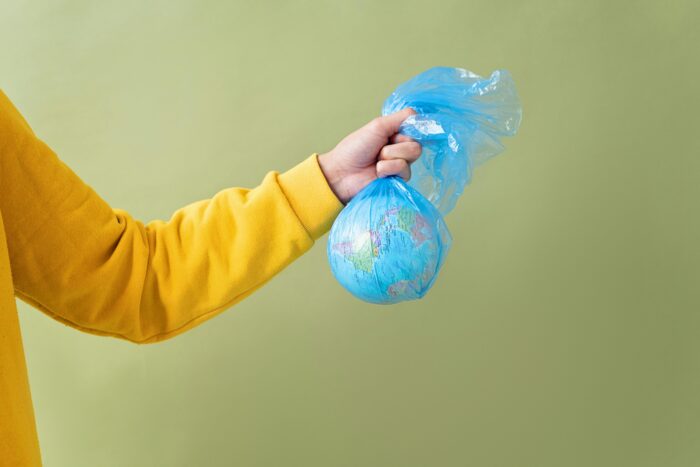
In 2023, the WWF produced a report entitled ‘PLASTICS: FROM NATURE TO PEOPLE. IT’S TIME TO TAKE ACTION.’, in which an overview of plastic pollution is presented, with an in-depth look at its consequences and possible solutions. Alarming data emerges from the report, to say the least: suffice it to say that the weight of all plastic on the Planet amounts to approximately 8 billion tonnes, which is twice the weight of the biomass of all terrestrial and marine animals on Earth. Globally, only 9 per cent of all plastic produced is recycled, and 100,000 microplastics are potentially consumed every day through food, air and water. Furthermore, it takes 500 to 1000 years for plastics to degrade.
Plastic debris has been found on all coastlines, on the surface and in the depths of all seas and oceans, in the soil, in lakes and rivers, and in the atmosphere. This has led scientists to be able to declare that there is now a true global environmental cycle of plastic, on a par with that of carbon and other elements (Bank M.S. & Hansson S.SV., 2019; Zhu X., 2021.). Between 9 and 23 million tonnes of plastic are discharged into rivers, lakes and oceans worldwide every year. As for releases to land, the quantities are very similar but it is speculated that terrestrial plastic pollution may be even higher than marine pollution. Recent studies would have shown that the amount of microplastics in the soil is 4 to 23 times higher than in the ocean.
The WWF report states that our country is among the worst in terms of plastic pollution among all the countries bordering the Mediterranean Sea. The Mare Nostrum has the highest concentration of microplastics ever measured in the deep sea, with 1.9 million fragments per square metre (Kane I.A. et al., 2020).
The big problem with plastic, as we said, is precisely its persistence. According to scientists, plastic will be part of the flora and fauna virtually forever. Even a new marine microbial habitat has been discovered that develops on plastic debris in the seas, which has been given the name ‘plastisphere’ (Amaral-Zettler L.A. et al., 2015).
Of course, the consequences of plastic pollution affect the climate, the economy and human beings, and are sometimes irreversible. Plastics contribute 3.7% of global greenhouse gas emissions during their life cycle (Landrigan P.J. et al., 2023). Most of the plastics produced are derived from oil and its derivatives and, when incinerated, cause additional CO2eq emissions, as well as toxic gases and carcinogenic and mutagenic dioxins, thus exacerbating global warming. Economic damages include health costs and those related to the failure to provide ecosystem services, especially pollution in the oceans. Plastic waste, in particular, causes significant direct economic losses due to damage caused to boats, fishing gear, the tourism sector and coastlines, which need to be periodically cleaned.
Plastic also enters and accumulates in terrestrial ecosystems due to improper disposal, ejections from landfills, remnants of plastic sheeting used for mulching and other plastics used in agricultural applications in the fields. Microplastics that accumulate in soils alter their chemical-physical properties and cause negative effects on the vital biological processes of plants and pedofauna: soil animals inadvertently ingest these plastic particles, which cause toxic effects such as false satiety, energy depletion, stunted growth and development. Ingestion of microplastics by soil animals also affects the gut microbiota, metabolism, immunity and fertility. Knowledge about the impacts of plastics on terrestrial biodiversity, however, still remains very limited compared to knowledge about marine ecosystems.
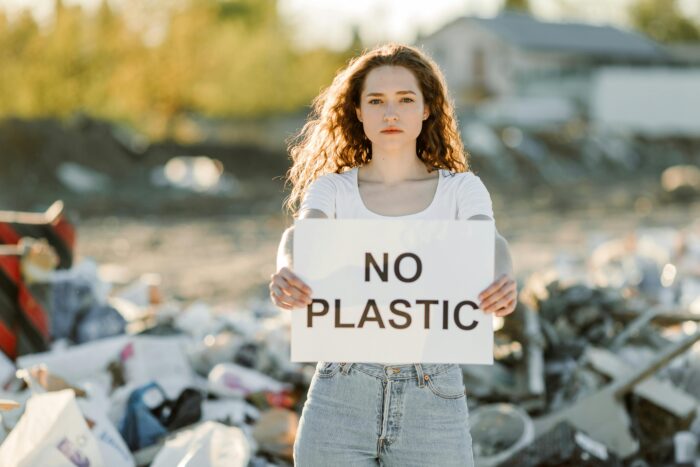
Without improvement in the management and disposal of plastic waste, the total amount of plastic could reach 25 billion tonnes by 2050 (Back to Blue, 2021). If this happens, in 30 years there could be more plastics in the sea than fish (Ellen McArthur Foundation, 2017).
Plastic pollution is of course a complex problem on a global scale, to which, unfortunately, there is still no definitive solution to date, although scientific research has made considerable progress in recent years. Proposals to tackle this major environmental challenge have already been examined and, in some cases, implemented, but they need to be shared and implemented at a global level, following a multi-level, multi-actor approach. The circular economy could be one of the possible solutions, as it aims at efficient resource management, minimisation of waste and pollution, and valorisation of products and materials, kept in use for as long as possible.
As the WWF report shows, companies have a key role to play in making plastics circular, which must be easily recyclable with clear guidelines to help promote the effective recycling of these materials at the end of their life cycle. The report also highlights the urgency of coordinated action at international level, involving governments and institutions around the world as pollution knows no borders and undermines the well-being and health of people at all latitudes. We citizens, of course, also have a major role to play. As consumers, in fact, we can make a difference through our choices and prefer to buy products that are not made of plastic materials or that are in any case made of polymers of plant origin (bioplastics), which are biodegradable.
Care must be taken, however, as not all bioplastics are also biodegradable: bio-polyethylene, for example, is a plant polymer, obtained from bioethanol synthesised from sugarcane, usually used for bottles of detergents and cosmetics; this polymer, although 100% recyclable, is not biodegradable as the structure of its molecule is practically the same as the synthetic equivalent, so if it is not recycled and disposed of correctly, it can accumulate and persist in the environment just like traditional plastic. Biodegradable plant polymers are usually extracted from starch, cellulose or vegetable oils. However, even these polymers, if over-processed, can be modified in such a way that they are no longer biodegradable. Bioplastics can also be produced from certain bacteria, such as those belonging to the genus Pseudomonas. Bacteria and fungi can also be used for the bioremediation of contaminated sites, as they produce special enzymes capable of degrading the polymers that make up plastic into simpler molecules, the monomers, which they use as a primary source of carbon to grow and multiply.
In short, more ecological and sustainable alternatives exist and can already be found on the market. It is up to each of us to do our own research, dispose of our waste correctly and choose to be an active and integral part of the solution. Are we really ready to revolutionise our habits and our lifestyle to protect the Planet and, consequently, ourselves?


